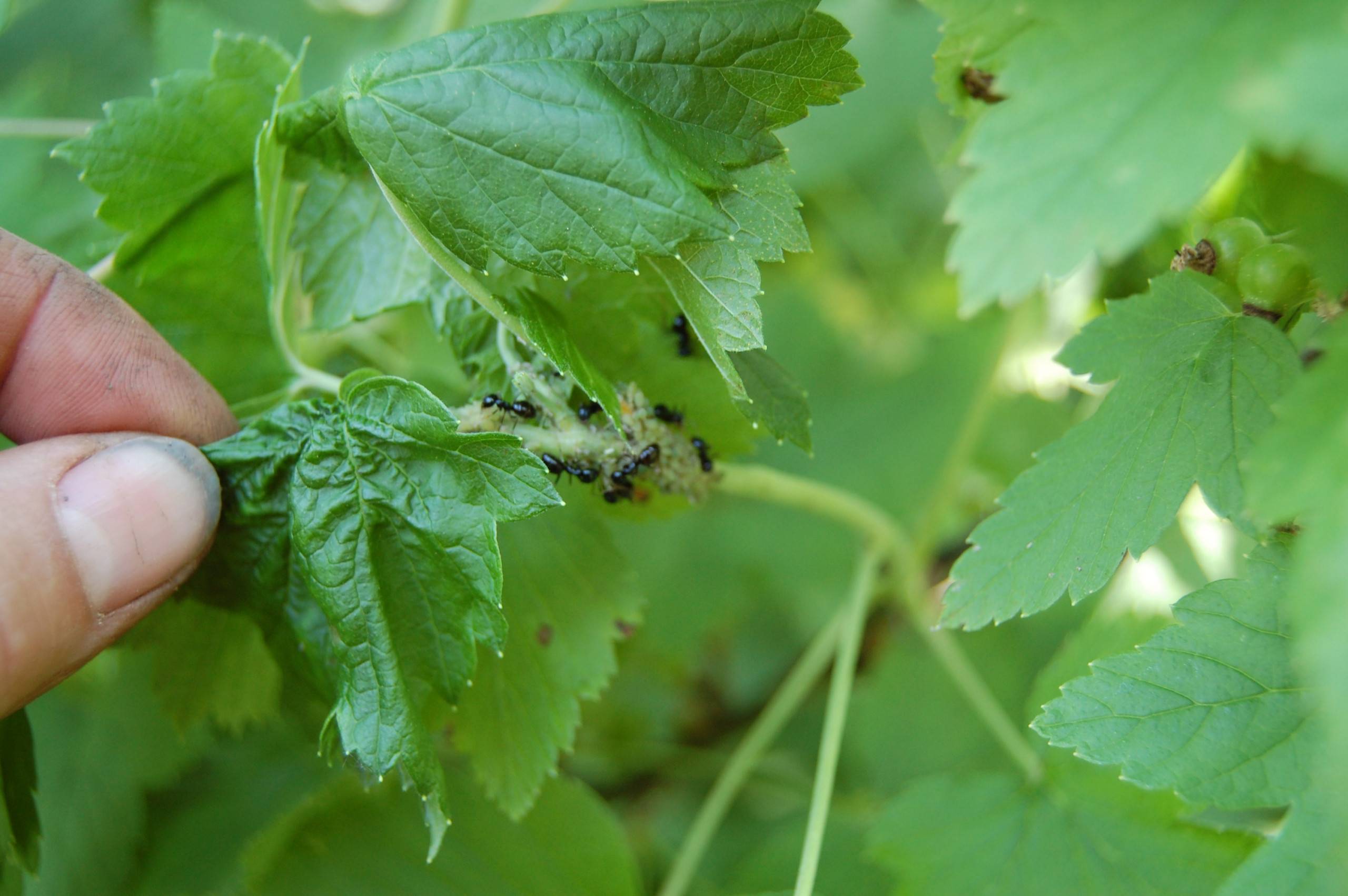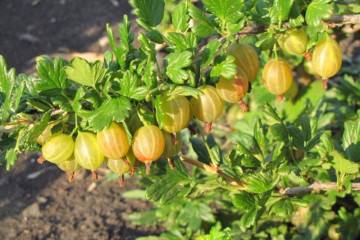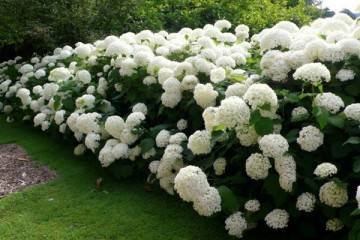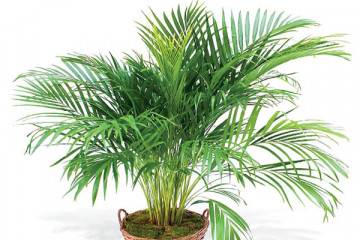Gooseberry Malachite - what to do with the plant after picking berries
Content:
Among a large number of varieties of gooseberries, Malachite is in great demand and popularity. Its emerald-colored berries are prized by gardeners for their versatility and taste. In order to regularly harvest good crops, it is necessary to adhere to certain recommendations for planting and caring for the crop.
Description and characteristics of gooseberry malachite
The Malachite variety was bred in 1959 by breeders from the Institute named after I.V. Michurin by crossing two varieties: Date and Black Negus. The result obtained has absorbed a lot of the advantages of these two varieties. Gooseberry Malachite has become a welcome guest on the plots of most summer residents and gardeners.
Characteristics of the bushes
Sprawling bushes are distinguished by strong growth and a large number of shoots. The height of an adult plant reaches 120-130 cm. The average number of thorns is distributed throughout the shrub. The leaf plates have a smooth matte surface and a slight downy hair on the inner side. The green leaves are divided into five lobes.
Characteristics of berries
The berries are large, greenish in color and round in shape. There is a slight waxy coating on the surface. One berry weighs 5-7 g. The skin is thin and firm, with well-visible venation. Ripe berries have a juicy and tender pulp. It is characterized by light sourness, rich aroma and sweetish taste. It contains a large number of bones inside.
Malachite is a self-fertile cultivar that does not require another pollinator cultivar. The first harvest can be obtained already in the second year after planting the seedling. And after 3 years, its active fruiting begins. Flowers appear in May, and the first berries appear in late June or early July.
Features of the variety
Before making a choice, it is necessary to know not only the description of the Malachite gooseberry variety, but also to study its main characteristics.
Ripening period and yield
The first gooseberry fruits appear 2-3 years after planting in a permanent place. And with each year of its active growth and development, the amount of the crop is rapidly increasing. Under optimal conditions and proper care, the fruiting of the bush is possible up to 20-22 years.
The largest amount of harvest from one bush can reach 5-6 kg. Depending on the climatic zone, it is collected in the first or second half of July and can continue until the beginning of August.
Taste qualities
Ripe fruits have good taste. They are characterized by a sweet taste with a slight sourness and a rich fruity aroma. They are used both fresh and in the preparation of desserts, jams and preserves.
Drought resistance and frost resistance
Gooseberry bushes can only tolerate mild and short drought, therefore they need regular watering and light shading.
The frost resistance of the variety is high. Without shelter, the gooseberry tolerates winters down to -30 degrees. Temperature fluctuations are also not afraid of him. This feature of Malachite allows it to be grown throughout Russia.
Disease and pest resistance
Malachite is characterized by an average immunity against fungal diseases, therefore it is recommended to regularly carry out prophylaxis against powdery mildew. Often the gooseberry bush is affected by sawflies, moths and aphids.
Using berries
The berries of this variety are universal, which means they can be:
- use fresh;
- freeze;
- make jam;
- add to compotes;
- make jams and berry desserts from them.
Advantages and disadvantages of the Malachite variety
Gooseberry Malachite fell in love with many due to its advantages:
- high frost resistance;
- versatility of fruits;
- stable and rich harvest;
- good taste of fruits;
- ripe fruits hang on the bush for a long time and do not crumble;
- berries tolerate transportation well;
- presentation of berries.
Of the shortcomings, it is worth noting only the susceptibility of the variety to powdery mildew and anthracose.
Planting young seedlings on the site
Growing this gooseberry is possible under any conditions, except for wetlands. To obtain a healthy plant and a rich harvest, you must follow certain rules of care, starting from the moment you purchase a seedling.
Selection and preparation of seedlings
The correct choice of planting material plays an important role in the development of culture. Therefore, during its purchase, you should pay attention to the appearance of the root system and the ground part.
Healthy planting material has well-developed roots and 2-3 large shoots. The roots should not be dark brown when cut. Their natural color is beige or light brown. Healthy shoots can be identified by their buds. In a living plant, with light pressure, the softness of the bud is felt, and in a dried plant, they will be dark and dry.
Landing time and pattern
The best time to plant gooseberries is autumn. Depending on the climatic zone, the time is selected 1-2 weeks before the onset of the first frost. But if necessary, planting seedlings can be done in the spring. For this, the time will come when the snow has melted, but the buds on the trees have not yet appeared.
A hole is dug 50-60 cm in diameter and with the same depth so that the root system has sufficient space when planting, taking into account the organization of the drainage layer.
Seat selection
Since the variety does not tolerate extreme heat, the best place for planting is a slightly shaded area, a place near a fence or near a spreading tree.
It is also worth excluding drafts and strong winds.
Site preparation
Site preparation involves removing weeds and fallen leaves. 10-15 days before the expected landing date, a hole is dug into which the following composition is demolished:
- 10 liters of humus;
- 100 g of wood ash;
- 70 g superphosphate;
- 30 g of potassium.
Planting process
A gooseberry seedling is placed in a pre-prepared hole. Then its root system is gently straightened, after which you can fill in the rest of the soil. This is followed by its easy tamping and abundant watering.
Features of seasonal care
When planning the cultivation of this gooseberry, you need to know how to properly care for this crop. The main activities include:
- watering:
- top dressing;
- loosening;
- pruning;
- preparation for winter.
Watering and feeding
To obtain a good harvest, it is necessary to maintain the optimum soil moisture. This procedure is especially important during bud growth, flowering, ovary formation and active fruit growth.
To prepare the plant for winter and to induce active growth and root development in it, it is important to take care of the gooseberry after harvest. It consists in basal moisture from the end of September to the second half of October.
Despite the fact that Malachite is considered an unpretentious variety, it is recommended to periodically fertilize it. The first fertilization should be done after flowering and the second after harvest. Both mineral and organic fertilizers are suitable.
Mulching and loosening
In order to reduce the frequency of watering gooseberries and retain moisture in the upper layers of the soil, you can mulch the hole. The procedure involves organizing a layer of 5-7 cm of straw, humus or rotten grass around the bush.
To better saturate the roots with moisture and improve air exchange, it is recommended to loosen the soil after each watering.
Using supports
If the shrub has long spreading branches, it is necessary to organize a support or a garter for the fruiting period. This procedure will protect the branches from damage under the mass of ripe fruits.
Pruning
The procedure should begin immediately after planting the seedling. At this time, it is recommended to shorten the existing branches, leaving 5-6 lower buds. Further pruning occurs in early spring and late autumn. This is another procedure that should be included when answering the question of what to do with gooseberries after picking their berries.
Preparing for winter
In the fall, in addition to pruning, it is important to prepare the gooseberries for winter. It involves the following activities:
- cleaning of fallen leaves;
- removal of diseased and damaged branches;
- hole mulching.
Reproduction
Reproduction of the Malachite variety is possible in several ways:
- By cuttings. Shoot trimmings are processed with a growth enhancer and planted in a separate container. When it takes root and puts out young leaves, transplant is performed in open ground.
- By division. Gooseberry propagation in this way has proven itself well. It involves digging up an adult bush and dividing it into two or more parts. After that, each of the parts is planted in the ground, as an independent bush.
- Layers. Part of the young shoot is buried in the ground, leaving part of the top. After rooting, the cuttings are separated from the bush and planted in a permanent place.
- Seeds. The seeds are collected from ripe fruits, then carefully dried and sown into the soil. Used only by breeders, as plants grown in this way may not have some of the characteristics of the variety.
Which method to choose depends on the skill of the gardener and his preferences.
Pest control
Gooseberries can be attacked by insect pests. Modern biological products, chemicals and folk methods will help to remove them. To prevent their appearance, spraying with prepared infusions is carried out, regular loosening of the upper layers of the soil, as well as adherence to agricultural technology.
As for diseases, gooseberries are especially susceptible to powdery mildew and other fungal diseases. The culture can be cured with a solution made from soda ash and copper sulfate.
Taking care of the Malachite gooseberry is quite simple. He needs the standard activities inherent in this culture. But if all the recommendations are followed, the plant will provide regular fruiting for many years.






















